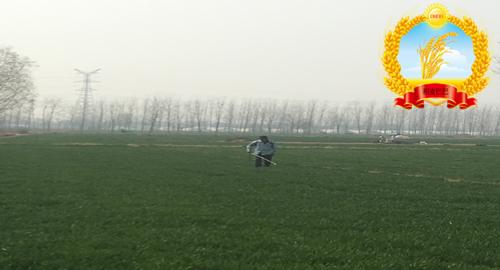Pay attention to the headline number of rice and wheat baba, and learn more information about the three rural areas in the first time.
The purpose of the Rice Wheat Baba team is to use the most simple language to help farmers share experience, high yield technology, and solve substantive problems!

Gray planthoppers have many hosts, which will not only harm rice, but also harm wheat, corn and other crops and field weeds such as wheat maidens.
Due to the influence of temperature and wheat compensation mechanism, usually gray planthoppers have little effect on direct prickling of stems in the early stage of wheat, but when the poisoning of gray planthoppers causes wheat bush dwarf disease, it is a great threat to wheat yield, so it is also necessary to pay attention to strengthening the prevention and control of gray planthoppers in wheat fields.
Gray planthoppers are pests that can currently overwinter everywhere and can also be migrated over long distances with the help of high-altitude air currents.
Adult and nymph are used as pests on the stems of host crops, and in severe cases, they can also harm the leaves.
Gray planthopper has a hardy and heat-afraid habit, the appropriate temperature for reproduction and development is 20-25 degrees, up to 7-8 generations a year, the general area breeds more than 3-4 generations as a pest, when the temperature exceeds 30 degrees or more, it will die a lot because of the impact of diapause, and stop eating for harm.
In areas with higher winter temperatures, breeding can continue to be harmful, while in low temperature places, it will burrow into the soil gap to overwinter, and then begin to be active after the temperature rises in the spring, and as the wheat plant grows older and the palatability becomes worse, it will migrate to the field block with good palatability in the rice or corn seedling stage to concentrate on the pest.
Therefore, for the control of gray planthoppers in spring wheat fields, it is generally advisable to select thiamethoxine or imidacloprid or thiamethoxamine for medicinal seed mixing before sowing wheat, which can not only prevent and control the spring gray planthopper pests, but also effectively control the underground pests during the autumn sowing period, so that the wheat seedlings are strong.
For the colder areas in the northern winter, you can enter March, the average daily temperature is stable at more than 15 degrees, and the gray planthopper is sprayed for control when the pest activity is enhanced, and for the wheat rejuvenation area in February, or the area with higher winter temperature, it is generally advisable to spray the drug control once in February.
When the wheat enters the period from pregnant ear to panicle flowering in April and May, when the number of gray planthoppers in the field is large, it is necessary to spray the drug once, or combine the control of wheat aphids to prevent the transfer of gray planthoppers to rice or corn fields in the later stage.
At present, the resistance of gray planthopper to the drug is not strong, and the use of imidacloprid, butylthiox budweiser, or thiamethoxine or acetamiprid can be used alternately, but when spraying, it is necessary to spray the field and ditch weeds together, which is conducive to improving the control effect.
The purpose of the Daobaba team is to use the most simple language to help farmers share experience, high yield technology, and solve substantive problems.
<h1>Like Retweet Let more farmer friends see!! </h1>